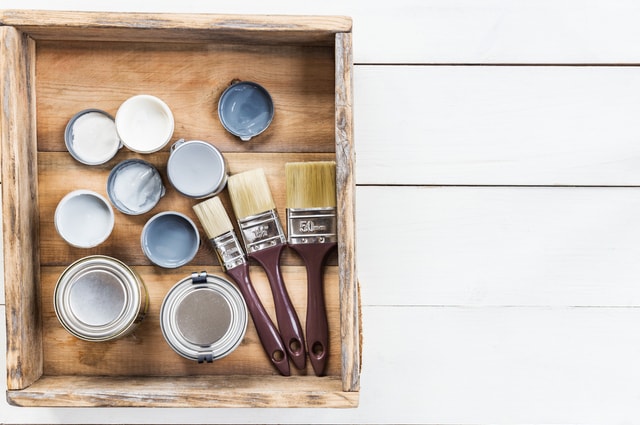
There are a few obvious and fundamental differences between paint and varnish that need consideration when deciding on the required finish particularly for wood. Wood is a natural product and as such has unique features. The first and most basic decision is whether you want to highlight or hide the detail in the grain of the timber.
Choosing The Desired Effect
If choosing to display the beauty of the grain, varnish should be used. Typically it is clear and offers UV protection for the timber. Before varnishing a stain can be applied to the timber to enhance or change it’s colour.
The range of colours for stains however can be somewhat limited and tends to be based around different timber shades. It is also important to decide on the sheen level (shininess) of the varnish which can range from ‘flat’ matt to full gloss. This sheen level is often denoted as a percentage (i.e 25%, 50%, 75%, the higher the number, the more glossy).
Whilst varnish to some extent is absorbed by the timber, paint is a pure surface treatment. This means it will coat over the natural features of the timber hiding them under a smooth finish. The main advantage of paint is that it comes in a virtually limitless range of colours. This versatility is further extended if using multiple colours. Paint comes in a number of types each giving its own finish.
There are a variety of textured paints including eggshell and different levels of finish from matt through to high gloss. It is always advisable to use a primer as a base coat as this will help ensure an even finish and also gives a better representation of the top coat colour. It also helps to ‘fill’ the grain and once rubbed back with light sanding offers a pure smooth surface.
Application
Varnish and paint can be applied in several ways. Brushing is typically the most common means of application. This requires a little more attention when using varnish as the timber will absorb on contact so the process should be completed start to finish in one. In this respect, paint is slightly more forgiving.
A roller can be used in place of a brush and generally offers a more even finish. It can, however, depending on the viscosity of the paint or varnish leave a slightly textured finish.
Both paint and varnish can be sprayed, though this requires specialist equipment and a suitable environment. This is best left to dedicated professionals.
In all these cases and with both paint and varnish, it is normal to give a base coat which, when dry, has a light sanding (de-nibbing) before applying a top coat to achieve your chosen effect.
Fundamentally the choice is dependant on whether you want to work with the natural features of the timber or to disguise them. Paint has the versatility of colour whilst varnish enhances the timber allowing it to tell its story.




